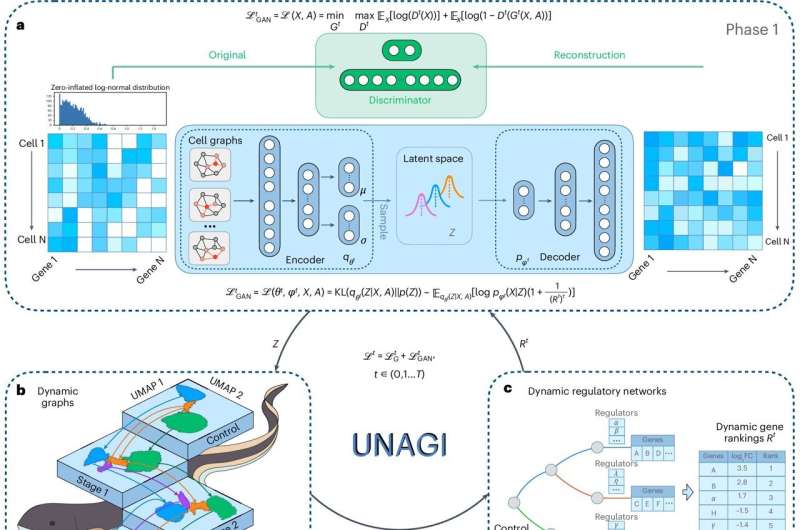IPF originates at the periphery of the lung and progresses inward, compromising more and more tissue and, eventually, making it difficult for a person to breathe. There is no cure for IPF, and neither of the two drugs that are approved as treatments can reverse the scarring—they only slow it down.
In a new study published June 20 in Nature Biomedical Engineering, researchers at Yale School of Medicine and collaborators took a significant step toward understanding IPF—and numerous other complex diseases—with an algorithm that interprets disease data and proposes treatments.
The research team developed a deep generative neural network called UNAGI (unified in-silico cellular dynamics and drug screening framework) that can identify patterns in disease-specific data.

